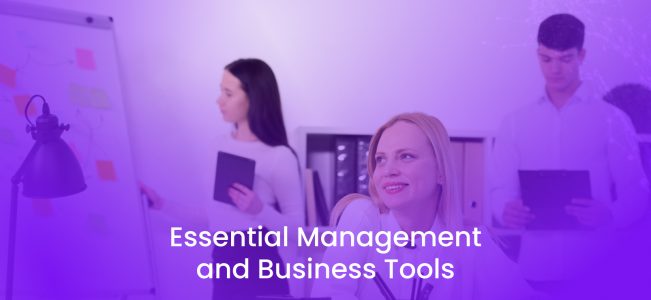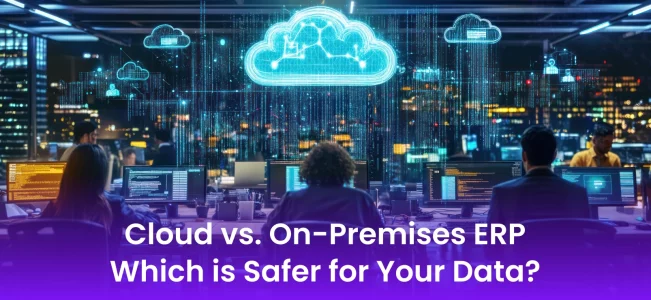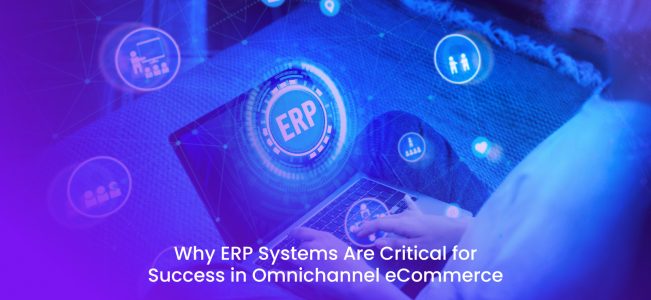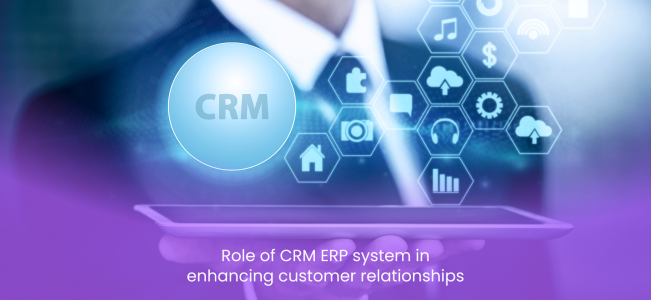5 Essential Steps to Selecting the Right ERP
With a number of ERP systems to select from, it could be overwhelming to choose the right one. Some businesses take a structured approach by issuing a Request for Proposal (RFP), while others prefer to manage the evaluation process internally. An RFP could be useful if you have highly particular needs, strict procurement policies or need a thorough comparison of vendors. However, it could also take a lot of time and restrict your ability to look into options other than those recommended by your ERP expert.
-
Gather Your ERP Selection Team
We recommend creating a team of five to eight people from different functional groups throughout the business. You want robust communicators who know the processes in their area.
Your ERP project team plays an important role in a successful implementation. They collect input from users to define business needs and set clear goals for the project. This involves identifying key challenges the ERP system requires to address, outlining must-have features and considering future business growth. Their responsibilities also involve researching, evaluating and choosing the right ERP solution while overseeing a smooth evolution to the new system.
Review ERP Requirements
When was the first time you put together an ERP project team and specified your functional requirements? If it has been a few months, now is a great time to go back over those lists and ensure that your top choices could address your crucial success factors. This is also a good opportunity to review your existing processes and how they might change in the new system.
Begin by asking your team the following questions:
- What challenges do you come across with our existing systems?
- What do your daily processes look like? What do you need to implement effectively?
- What areas do you think we need improvement in?
- How do you consume data and engage with the system? (This could impact your decision between private and public cloud ERP)
Compare ERP Solutions and Find the Best Fit
Formerly researching ERP systems, outline the type that suits your business:
- Off-the-shelf ERP offers wide functionality and long-term adaptability.
- Vertical ERP is personalized for specific industries.
- Custom-built ERP suits businesses requiring heavy personalization.
Choose a solution that fulfills existing needs and scales with future growth. Use the 80/20 rule, in which your ERP should cover 80% of your requirements out-of-the-box; the rest 20% could be managed through customization or process tweaks.
Key considerations:
- Tailor only when required to avoid maintenance concerns.
- Know the total costs (licensing, implementation, training, support).
- Don’t delay decisions because inaction results in inadequacies and higher costs.
- Be cautious of scope creep. Stick to your key project goals unless additional features clearly support them.
ERP Vendor vs. ERP Partner
An ERP vendor develops the software, while an ERP partner helps you implement and optimize it. Vendors offer deep product knowledge, but partners combine tech expertise with business insight. A good partner will learn your business, align with your values, and guide you throughout the process.
What to Look for in an ERP Demo?
By now, you must have 1–3 solutions accepted. In your demo:
- Assess the interface and ease of use
- Check alignment with key business requirements
- Ask regarding customization, integration, and continuous support
Selecting the right ERP and the right partner will set the stage for long-term success.
Be Realistic with Your Implementation Plan
Before you make your final decision, ask your partner for a comprehensive implementation plan. It should involve:
- System design
- Functional testing
- Software installation and configuration
- Business processes and workflows
- Data migration (ensure your data is completely operational and cleaned – the data out of your new system is only as good as the data you put into it)
- Change management activities
- User acceptance testing by key users
- User training (including super users and the rest of your team)
Having this plan up front will assist you in completely comprehending the resources and costs needed to successfully kick off your new ERP implementation.
Track Your Project Success
Once your ERP system is up and running, the work is not over; you must measure whether it’s delivering the outcomes you anticipated. Begin by revisiting your original list of goals and key success factors. Have you enhanced cross-departmental transparency, decreased operational expenditures, and boosted customer satisfaction? Instead of going with a gut feeling, back up your progress with strong data.
Make use of the performance measures that are readily available to you through your ERP system. Examine key performance indicators (KPIs) before and after deployment, paying particular attention to areas like overall efficiency, inventory accuracy, financial reporting speed, and order processing timeframes. If certain goals are not being met, delve into the data to recognize roadblocks and possibilities for optimization.
Get feedback from staff members that use the system on a daily basis as well. Is it easier for them to carry out their duties? Are there any persistent problems that need to be resolved? Increasing the ERP setting’s long-term value requires constant improvement.
Final Thought
As you can see, there is a lot to look for when choosing ERP software for your organization. For numerous companies, it could be an overwhelming process, but it does not have to be. You can ensure a successful transition to a system that supports your long-term growth by clearly defining your goals, effectively comparing systems, and collaborating with the right and best ERP implementation partner.
Why Choose the CERP Suite?
When choosing an ERP solution, adaptability, scalability, and usability are crucial, and that’s precisely where “CERP Suite” surpasses. Built to adapt to your business as it evolves, CERP Suite delivers real-time insights, simplified workflows, and complete integration throughout departments. Whether you’re managing complex operations or scaling for the future, CERP Suite offers the tools and transparency required to make informed decisions and drive measurable outcomes. With a user-friendly interface and strong support, it streamlines implementation while setting the stage for long-term success.












